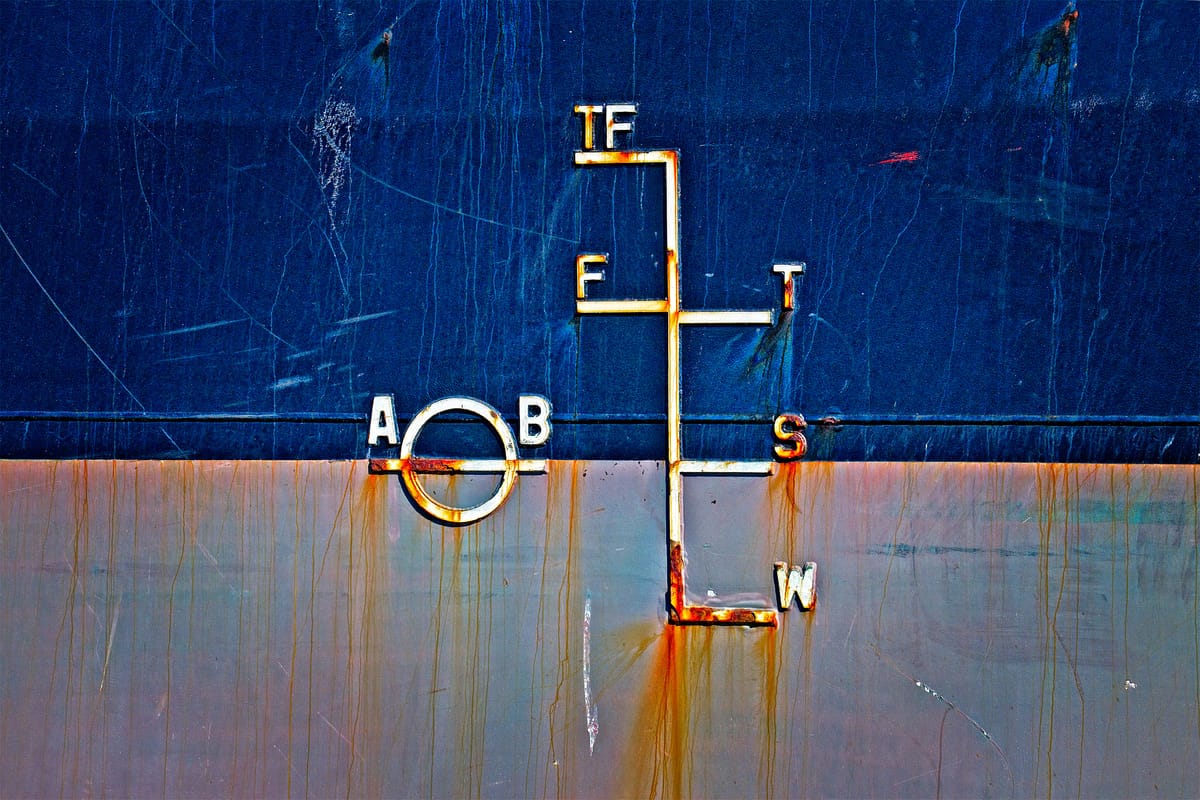How much can a ship carry?

These marks [found on the photo above], called load lines, show the maximum load a ship can carry.
Load lines owe much to a British member of Parliament named Samuel Plimsoll. Worried about the loss of ships and crew members due to overloading, he sponsored a bill in 1876 that made it mandatory to have marks on both sides of a ship. If a ship is overloaded, the marks disappear underwater. The original “Plimsoll line” was a circle with a horizontal line through it. The symbol spread around the world; additional marks were added over the years.
The letters on either side of the circle stand for the ship’s registration authority. AB is the American Bureau of Shipping, one of 12 members of the International Association of Classification Societies, which sets and maintains safety standards for more than 90 percent of the world’s cargo ships.
The marks and letters to the right of the circle indicate maximum loads under different climatic conditions. Salt water is denser than fresh, cold water denser than warm. Since water density affects ship buoyancy, different conditions call for different load lines.
W marks the maximum load in winter temperate seawater, S in summer temperate seawater, T in tropical seawater, F in fresh water, and TF in tropical fresh water, like that of the Amazon River.
Taken from:
The Secret Language of Ships | Hakai Magazine
Signs and symbols on the sides of ships tell stories about an industry few outsiders understand.



